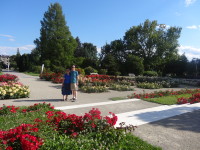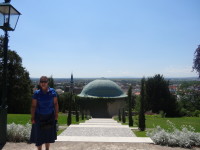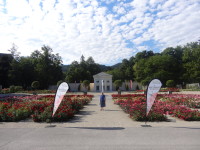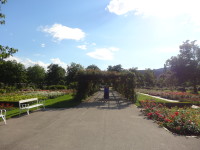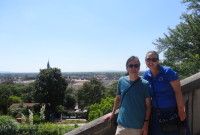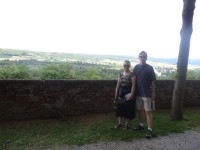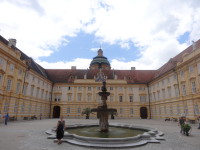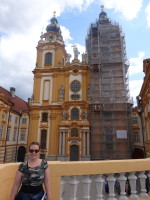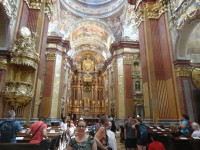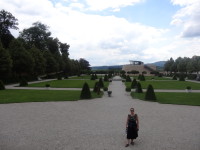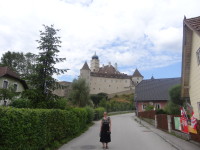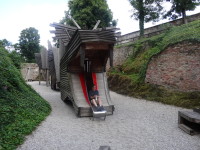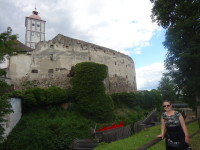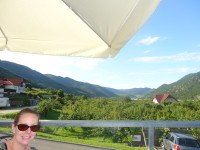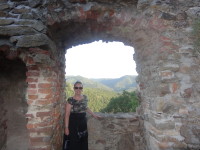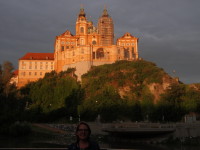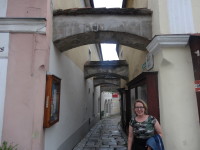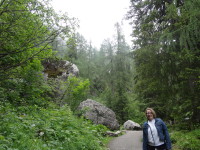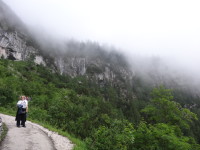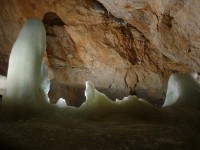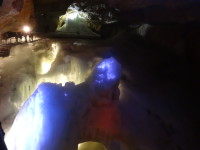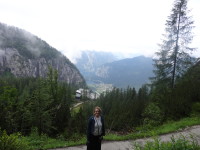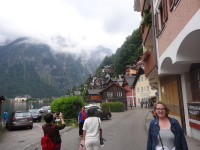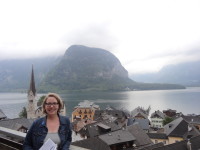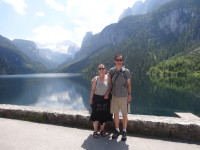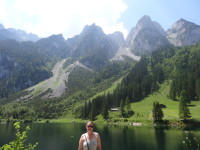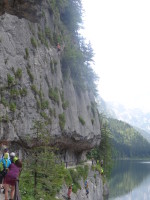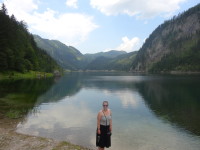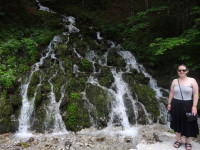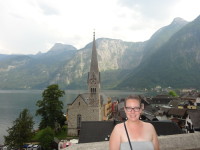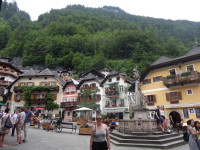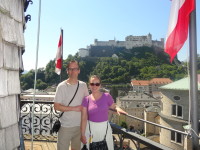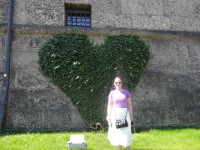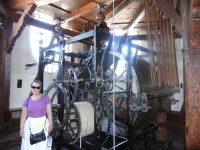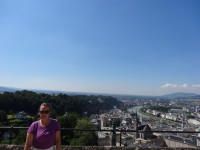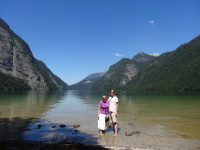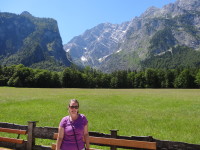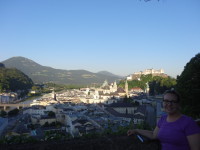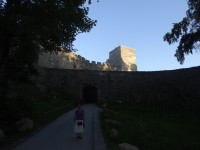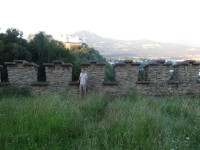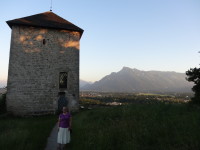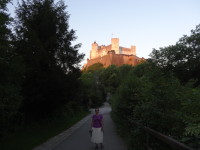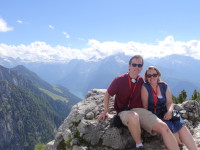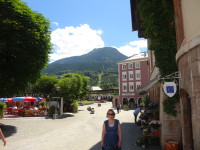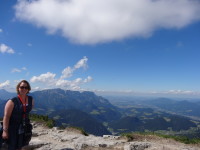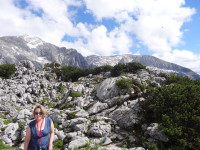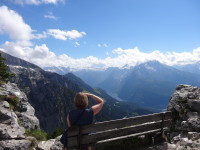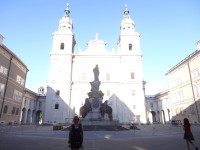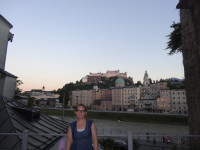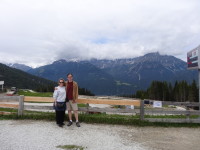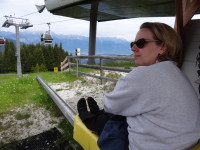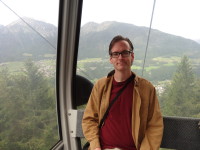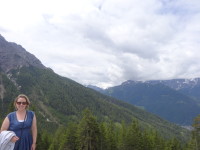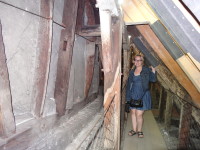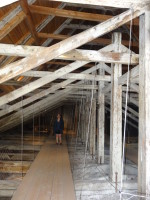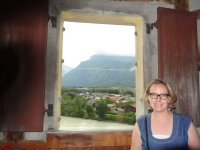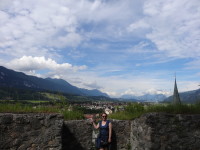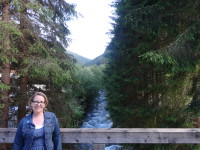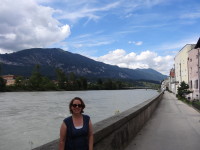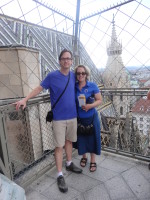 One of the great skills traveling adults should have is the ability to read subway maps. We’ve now managed to get around on mass transit in Chicago, New York, DC, London, Paris, Rome (for what the two subway lines are worth) and now Vienna. The names of stations change, but the basic maps look the same. It makes major city travel much easier. Ticket systems are another matter, of course.
One of the great skills traveling adults should have is the ability to read subway maps. We’ve now managed to get around on mass transit in Chicago, New York, DC, London, Paris, Rome (for what the two subway lines are worth) and now Vienna. The names of stations change, but the basic maps look the same. It makes major city travel much easier. Ticket systems are another matter, of course.
We left Baden and headed to the Vienna airport to return our car. Our plans for the last three days are all in major cities (Vienna and Munich), so we had no need of a car. Getting to the airport was no problem at all — the route was well marked by signs and even airplanes painted on the road in the correct lanes, but, man, was finding the rental car return entrance a huge pain in the butt. We followed signs to a parking lot that was full of rental car signs, but we could not find any way into it. We circled the lot twice, in calm and soothing airport traffic, before making a probably illegal left-hand turn onto a small road that finally revealed an entrance to Fortress Enterprise. We left our little car of ten days behind, which always makes me a little less tense. I love the flexibility of a car in Europe, but the combination of not being able to read signs, unknown-to-me road rules, aggressive drivers, motorcycles and bicycles everywhere, and too many one-lane roads all add up to my being slightly tense while driving. It was a good car, though, and we will miss out only source of air conditioning.
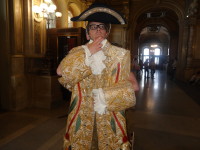 We took the subway into downtown Vienna, and we checked into our budget room, which is very small but serviceable. I will say that I have missed air conditioning and fans on this trip, and that seems unlikely to change for the next two days.
We took the subway into downtown Vienna, and we checked into our budget room, which is very small but serviceable. I will say that I have missed air conditioning and fans on this trip, and that seems unlikely to change for the next two days.
Ah! People singing in loud voices while they die, or if it is a comedy, singing while they measure for furniture — we must be at the Vienna State Opera house. We took an interesting and lively tour of the building, which was for sure the ONLY way I was ever going to get on that stage. Parts of the building are still from the 1800s, but much of it was rebuilt after World War II. That turned out to have some good benefits, in that the stage was expanded to the side for more storage room, which is needed, as the opera house puts on forty-five different operas per year, and runs four or five per week. They need the extra space for storage of sets, which they change out daily, or two times per day if they are rehearsing an opera in the morning. They employ one thousand people all year round, on a budget of one hundred million euros. I am not a huge opera fan, but the building was interesting, and how it works was very interesting.
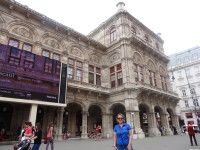 We tried to find the nearby opera house museum, wandering around a courtyard for several minutes, wandering into offices and storerooms, and almost walking into the opera house school. We finally asked around and found out there used to be a museum, but it closed (from the look of things, they needed the storage space).
We tried to find the nearby opera house museum, wandering around a courtyard for several minutes, wandering into offices and storerooms, and almost walking into the opera house school. We finally asked around and found out there used to be a museum, but it closed (from the look of things, they needed the storage space).
On to St. Stephen’s! The cathedral in Vienna is one of the only things I vaguely remember from my trip here twenty years ago. It is huge, Gothic, spired, and quite lovely. We got the all-inclusive ticket that gets you everywhere (remember, it was a Meredith-in-charge day today). We started with an audio guide that pointed out twelve areas of the church, including the new organ from the early 1990s. My favorite fun fact — the cathedral is always under renovation. It takes about forty years to renovate the church, so when they finish, it is time to start renovating again. The recording used it as a sign of the futility of human endeavors. I liked that.
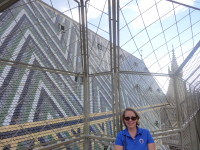 We rode an elevator up the smaller of two towers of the church. The tower building was interrupted by a war with the Turks, so the tower was never finished. It has good views from the top, and the safety netting goes well over my head, so I was only moderately queasy up there and was able to wander around with Meredith.
We rode an elevator up the smaller of two towers of the church. The tower building was interrupted by a war with the Turks, so the tower was never finished. It has good views from the top, and the safety netting goes well over my head, so I was only moderately queasy up there and was able to wander around with Meredith.
We finished the touring of the church for today with the crypt. We have more of the church to see, but we ran out of time today, so we will see the rest tomorrow. The crypt is still in use for the burial of bishops and cardinals, and the Hapsburg royal family was all entombed there. Fun crypt fact — they embalmed the bodies using wax so the bodies would not stink up the church when they decomposed. On the shelves around the coffins are jars full of alcohol containing the removed organs of the bodies, except the hearts, which are kept in silver jars near the palace (I think). The crypts connect to the old underground cemetery where 11,000 people were buried after an edict that no one could be buried inside the city limits. The crafty people reasoned the law did not forbid being buried under the square, but only on it, so they designed an underground cemetery. The practice was stopped after forty years when odors began making it difficult to have mass in St. Stephen’s.
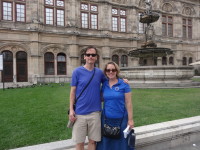 That mostly finished up the day. We had supper and ice cream, then went back to the opera house. Since it was the last day of the season, they were broadcasting the live performance on a huge screen outside the opera house, and Meredith wanted to see some of it. We stayed for about a half hour before going home. Since it was in Italian with German subtitles, I was a little fuzzy on the plot, but it seemed as if it went some thing like: an implausibly older man who can sing his lungs out falls in love with a beautiful girl who can also sing her lungs out, but she is the daughter of an evil baritone, so there are going to be problems.
That mostly finished up the day. We had supper and ice cream, then went back to the opera house. Since it was the last day of the season, they were broadcasting the live performance on a huge screen outside the opera house, and Meredith wanted to see some of it. We stayed for about a half hour before going home. Since it was in Italian with German subtitles, I was a little fuzzy on the plot, but it seemed as if it went some thing like: an implausibly older man who can sing his lungs out falls in love with a beautiful girl who can also sing her lungs out, but she is the daughter of an evil baritone, so there are going to be problems.
We returned to out room just as some (hopefully) cooling rain began to fall, so we had another good day of Riordan tourism.
